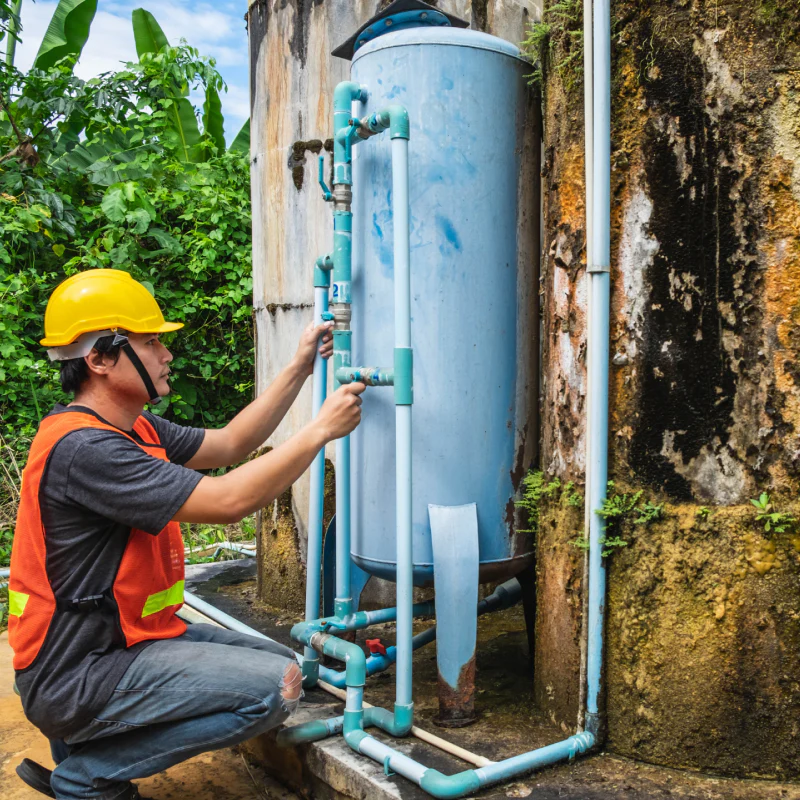Experienced Inspection Service at Your Fingertips
Water Seepage
When we talk of seepage, however, generally we are talking about water penetration into the basement area. Water will seldom enter an area without leaving its sign that it has been there, and the sign will be a water stain. Water stains are there for the duration unless someone makes an effort to either remove them or cover the water stains over them. Painting the basement floor and walls are one good way of hiding signs of past water penetration. But as an inspector, when we find the basement floor and walls have been recently painted, it makes us extremely suspicious and causes us to look in the place where the homeowner may not think we are going to look or in places where it is difficult for the homeowner to paint. We will generally look at the base of the lally columns for any signs of rusting or oxidation. We will remove the furnace or boiler jacket cover and look at the base of the heating plant to see if there is any rusting there. The back of the basement stairs is also a very good place to look for signs of past water penetration and if there is baseboard convector heat in the lower level, We will take a close look at the back of the convectors for signs of rusting.
The presence of a sump pump does not necessarily mean a water seepage problem in the basement area. As a matter of fact, We think it is good building practice to install sump pumps in all homes. We all know that sooner or later we will get a plumbing leak, the water heater will develop a leak, the washing machine may back up, or our teenager may not put the shower curtain on the inside of the bathtub, which can all lead to water stains somewhere the in house. Merely seeing one water stain in the basement area is not a sign of water penetration coming from the exterior and in the case of these occasional man-made leakage conditions, a sump pump is a good thing to carry water out of the basement. It must also be remembered though that any area below grade is susceptible to water penetration during certain weather conditions.
We are thoroughly convinced that a major percentage of water seepage into basement areas can be corrected or at least controlled by maintaining a positive pitch of the grades around the foundation and extending the rain leaders as far away from the building as possible. If these two procedures are maintained, we believe most basements can be cured of their leakage problems. If the above two simple procedures have not corrected the problem, there are two approaches for waterproofing a basement. The best approach is a preventative approach and that is accomplished from the exterior of the building to keep water from penetrating the foundation. Unfortunately, this is the most expensive approach. This would require excavating down around the perimeter of the foundation to the elevation of the footings. If there are no water-proofing barriers applied to the foundation, this would have to be done, and if there is no foundation drain installed, this would also have to be implemented. On an existing home with shrubbery, decks, front porches and what have you extending from the foundation, this approach can get very costly and most homeowners are not willing to pay for the approach of keeping water from penetrating the foundation.
Therefore, an interior control approach is generally what is done by many homeowners. This is meant that some type of collection drainage and piping is installed around the interior perimeter of the foundation. This piping is directed to a sump pit which lifts the water out from the basement into some safe outfall location. This may also require installing drainage holes in the foundation wall and the application of some type of waterproofing compound on the inside of the foundation. In this case, we are allowing the water to enter the basement, but we are controlling it and directing it back to the exterior of the building. This is the most practical approach that many homeowners take, rather than the more costly approach of keeping the water from entering the basement in the first place.
In conclusion, there are probably several different approaches to evaluating water seepage and many different cures. Each case must be analyzed on its own merits and a corrective approach that addresses the particular problem you are facing should be implemented.




